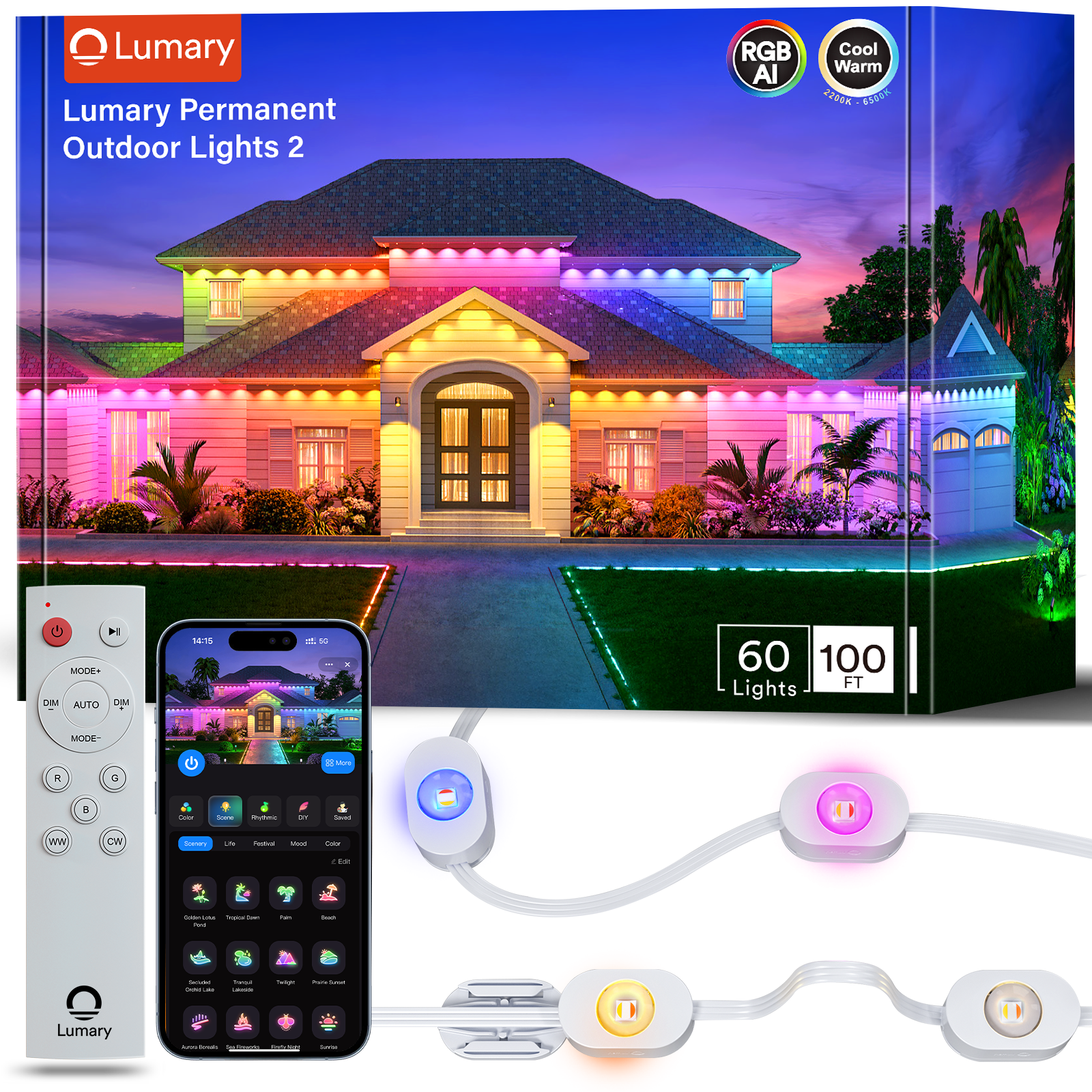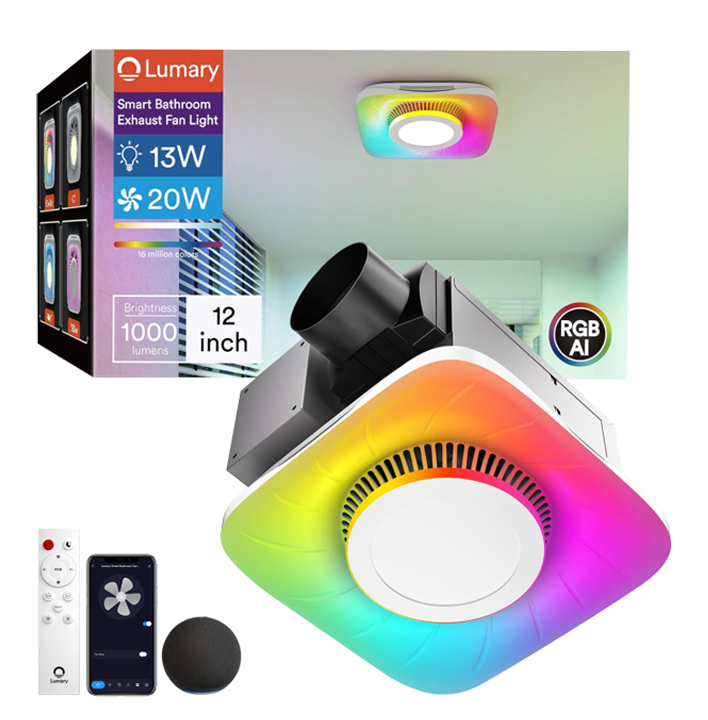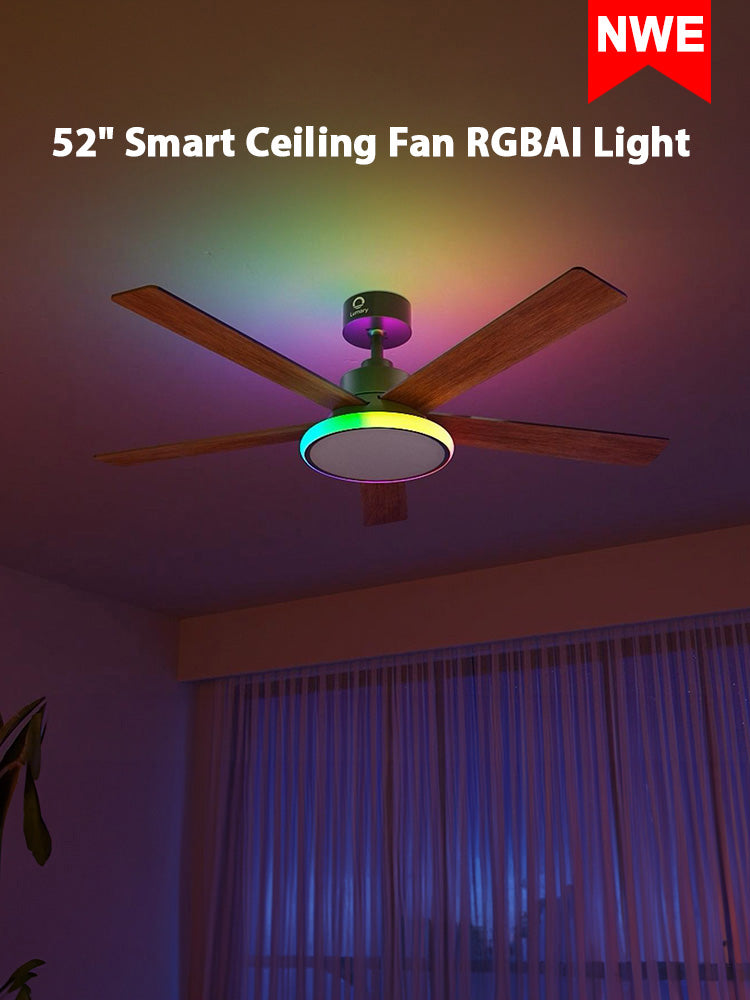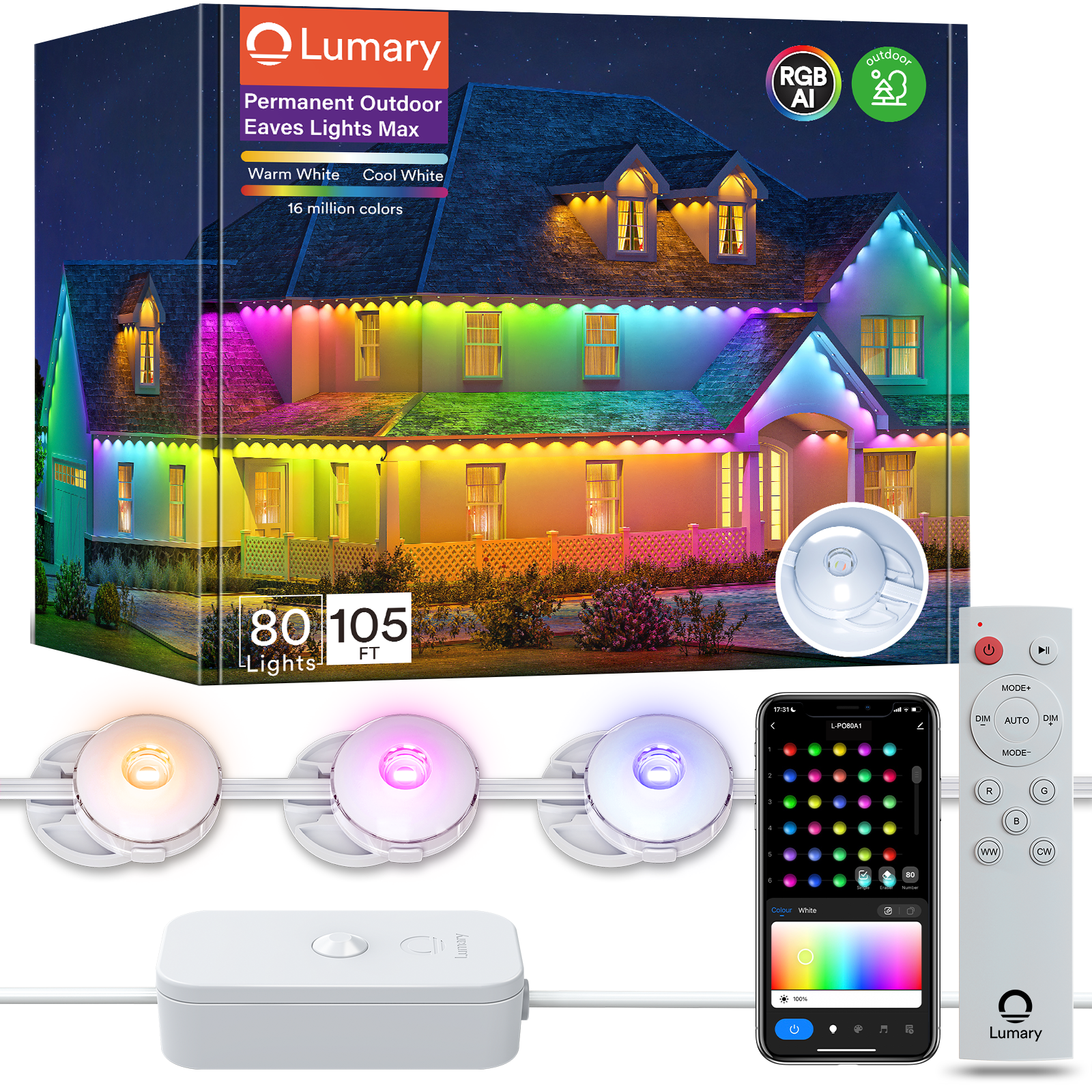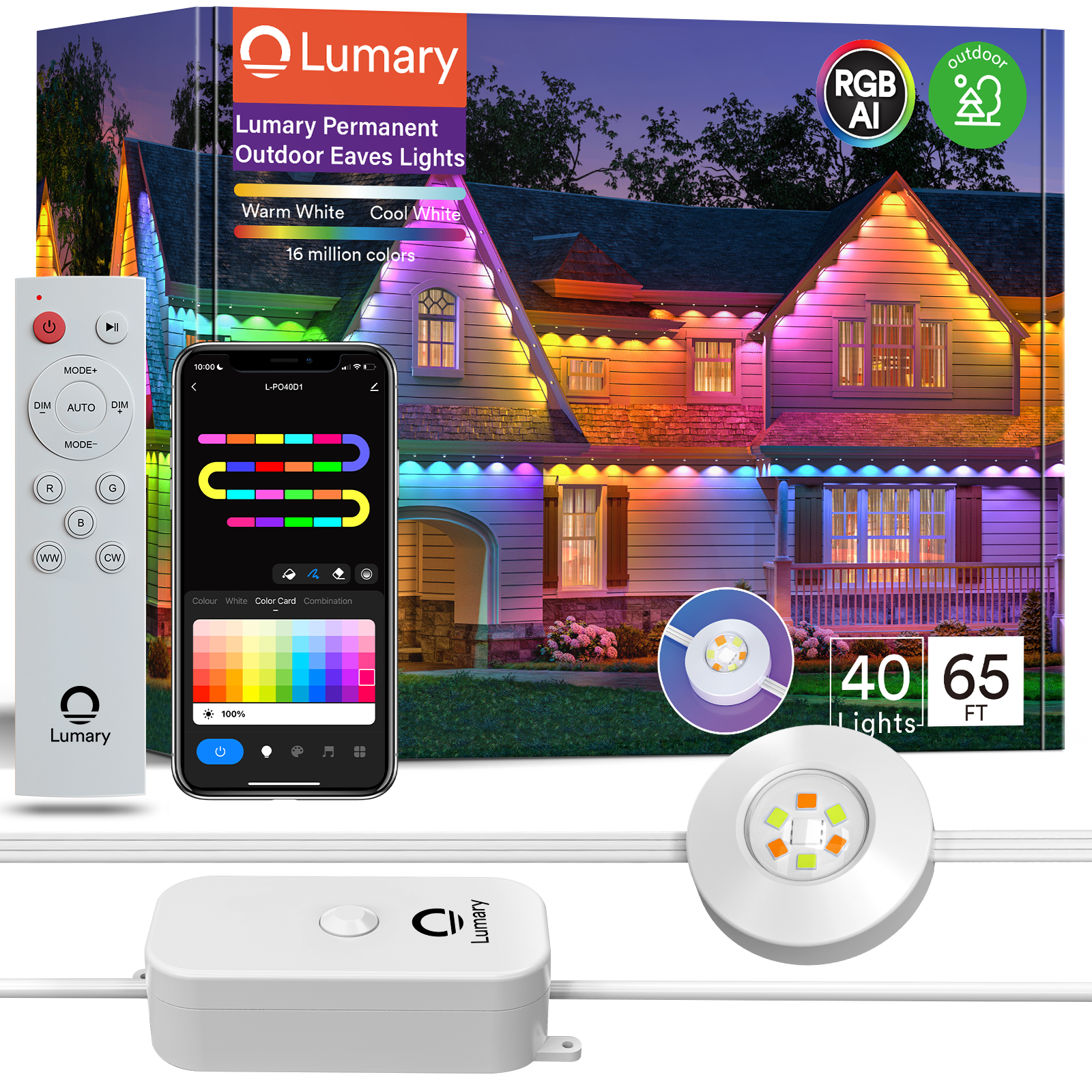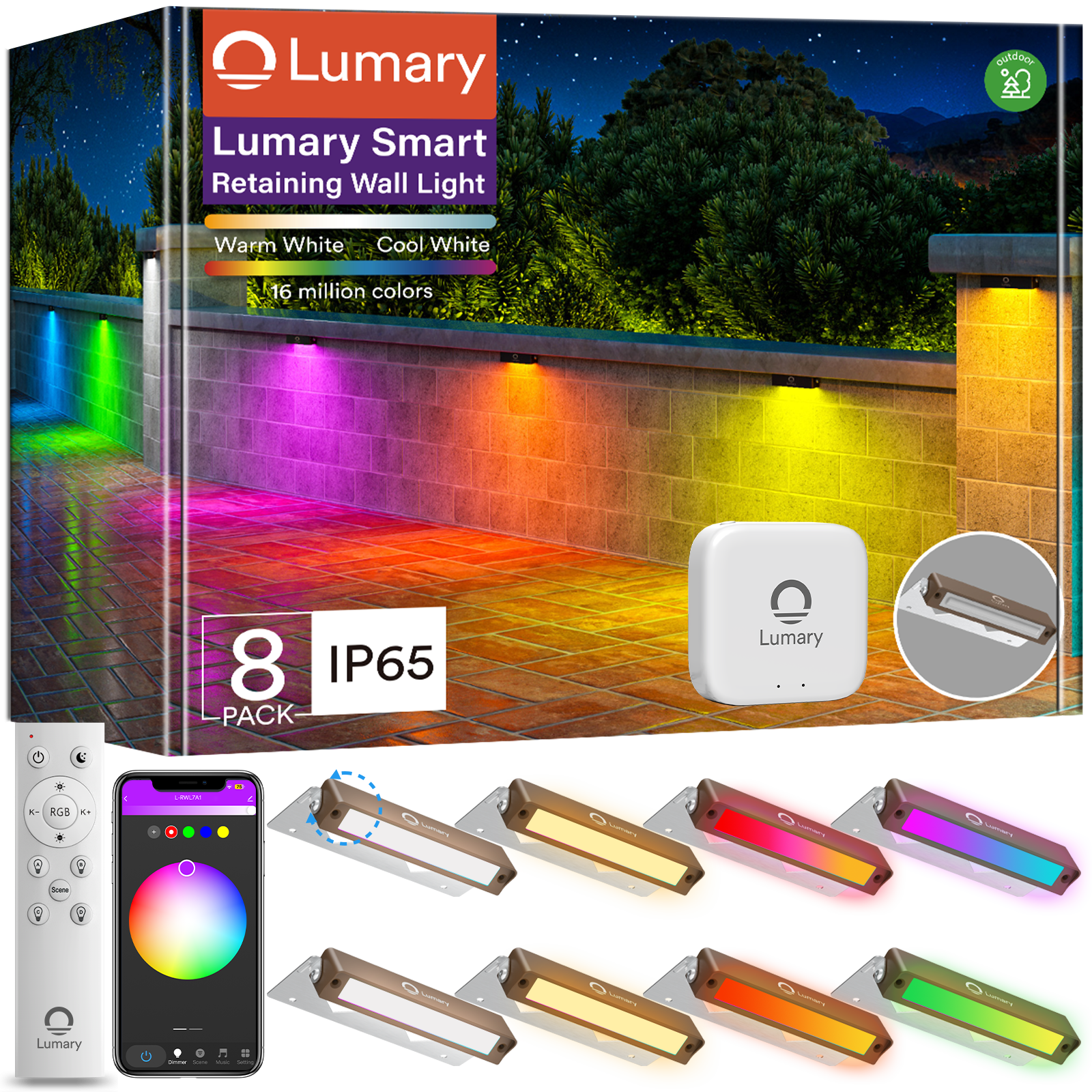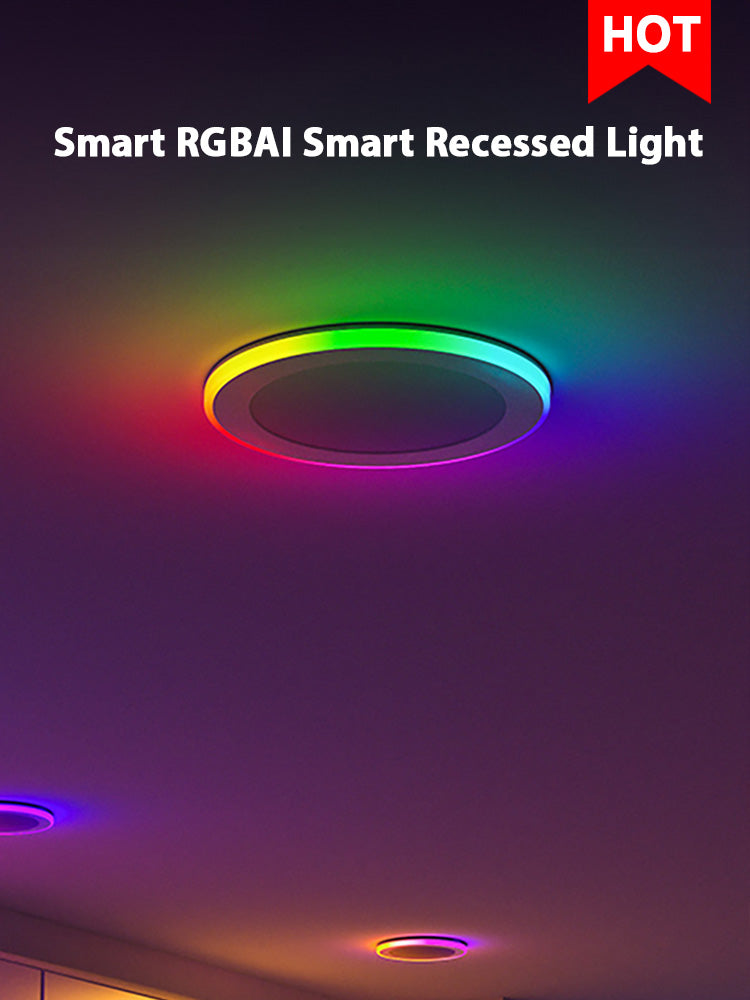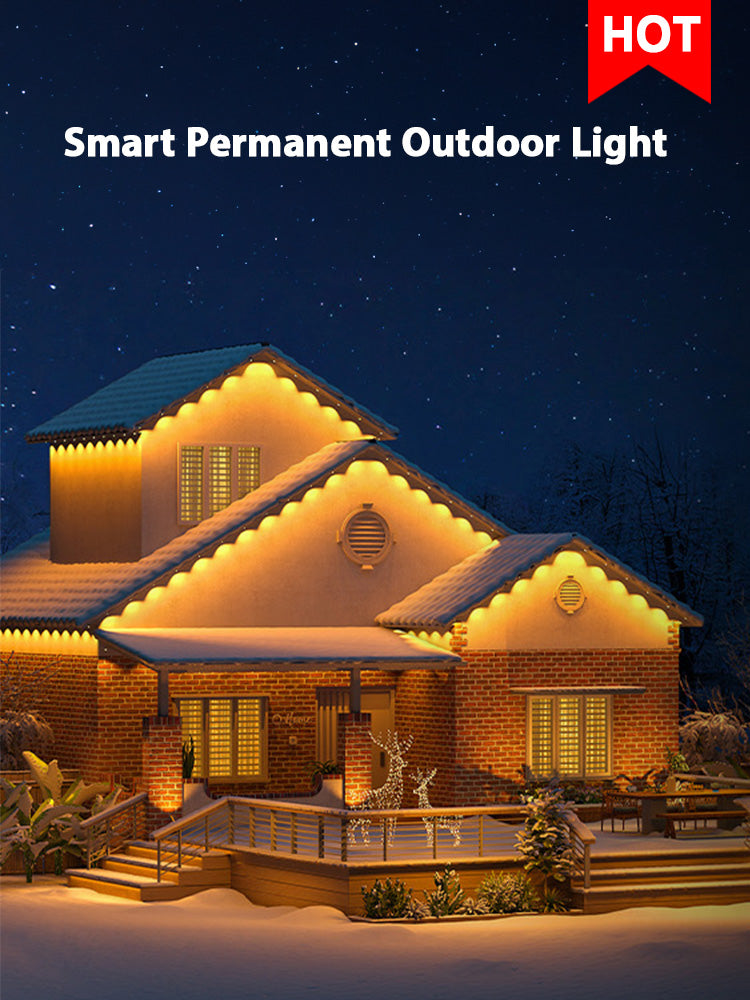Outdoor lighting plays a crucial role in enhancing home security and aesthetics. LED smart lights offer numerous benefits, including superior energy efficiency and longer lifespan compared to traditional lighting solutions. These lights convert around 80% of consumed energy into light, making them highly efficient. Additionally, advanced features like remote control and automation provide convenience and flexibility. This guide will provide a detailed comparison of top outdoor LED smart lights, helping homeowners make informed decisions.
Top Outdoor LED Smart Lights

Product 1: Lumary Smart Outdoor Spot Lights 56ft Gen 2
Key Features
- 16 million colors with RGBAIWW technology
- Individual light control for personalized lighting
- Multiple control options: app, voice, remote, and control box
- 44 preset scene modes and DIY mode
- IP65 waterproof design for durability
- Adjustable white light from warm amber to bright white
- Dimming capabilities from 1% to 100%
- Built-in timer function for automation
- Music sync technology for dynamic lighting
Pros
- Extensive color options enhance ambiance
- Versatile control methods offer convenience
- Durable design withstands harsh weather conditions
- Customizable scenes cater to various occasions
- Energy-efficient with automation features
Cons
- Higher initial cost compared to basic outdoor lights
- Requires a stable Wi-Fi connection for optimal performance
Product 2: Philips Hue Lily Outdoor Spotlights
Key Features
- 16 million colors for versatile lighting
- Hue Bridge compatibility for seamless integration
- Voice control with Alexa, Google Assistant, and Apple HomeKit
- Weatherproof design for outdoor durability
- Adjustable beam angles for targeted lighting
Pros
- Wide range of colors for customization
- Excellent integration with smart home ecosystems
- Durable and weatherproof for long-term use
- Adjustable angles provide focused lighting
Cons
- Requires Hue Bridge for full functionality
- Higher cost compared to non-smart alternatives
Product 3: Electric Smart Light Bulb
Key Features
- Dimmable white light for customizable brightness
- App control for remote management
- Voice control compatibility with Alexa and Google Assistant
- Weather-resistant design for outdoor use
- Energy-efficient LED technology for cost savings
Pros
- Customizable brightness levels for various needs
- Easy integration with popular voice assistants
- Durable and weather-resistant for reliable performance
- Energy-efficient design reduces electricity costs
Cons
- Requires a stable Wi-Fi connection for optimal performance
- Limited color options compared to RGB lights
Factors to Consider When Choosing Outdoor LED Smart Lights

Brightness and Lumens
Importance of Adequate Brightness
Adequate brightness ensures outdoor spaces remain well-lit and secure. Proper illumination deters potential intruders and enhances visibility. Brightness impacts the overall ambiance, making outdoor areas more inviting. Homeowners should prioritize lights with suitable brightness levels for their specific needs.
How to Measure Lumens
Lumens measure the total amount of visible light emitted by a source. Higher lumens indicate brighter light output. For outdoor LED smart lights, understanding lumens helps in selecting the right product. A typical outdoor area may require lights ranging from 700 to 1300 lumens. Always check the lumen rating on product specifications to ensure adequate brightness.
Energy Efficiency
Benefits of Energy-Efficient Lights
Energy-efficient lights offer significant cost savings. LED technology consumes less power compared to traditional halogen or incandescent bulbs. Smart lighting systems provide precise control over brightness levels, further reducing energy consumption. Scheduling features allow lights to turn off automatically, conserving energy when not needed. Detailed energy reports from smart bulbs help monitor and reduce electricity usage.
How to Identify Energy-Efficient Products
Look for products with high energy-efficiency ratings. LED lights generally offer better efficiency than halogen or incandescent options. Check for certifications like ENERGY STAR, which indicate superior energy performance. Review product descriptions for features like dimming capabilities and programmable schedules. These features contribute to overall energy savings.
Smart Features and Connectivity
Types of Smart Features Available
Outdoor LED smart lights come with various smart features. Common features include app control, voice control, and remote management. Some products offer customizable scenes and color options. Advanced models may include music sync technology and built-in timers. These features enhance convenience and user experience.
Importance of Reliable Connectivity
Reliable connectivity is crucial for optimal performance. Most smart lights rely on Wi-Fi connections for remote control and automation. A stable Wi-Fi signal ensures uninterrupted functionality. Poor connectivity can lead to delays or failures in executing commands. Ensure the installation area has a strong Wi-Fi signal to maintain consistent performance.
Durability and Weather Resistance
Importance of Weather-Resistant Design
Outdoor LED smart lights must withstand various weather conditions. A weather-resistant design ensures longevity and consistent performance. Rain, snow, and extreme temperatures can damage poorly designed lights. Homeowners should prioritize products with high IP ratings. An IP65 rating, for example, indicates strong protection against dust and water.
Weather-resistant lights maintain functionality in harsh environments. This feature is crucial for outdoor settings where exposure to elements is inevitable. Durable lights reduce the need for frequent replacements, saving time and money. Reliable performance enhances home security and aesthetics year-round.
How to Identify Durable Products
Identifying durable outdoor LED smart lights involves checking specific features. Look for high-quality materials such as aluminum or stainless steel. These materials resist corrosion and wear. Examine the product specifications for IP ratings. Higher ratings indicate better protection against environmental factors.
Durable lights often come with warranties. A longer warranty period suggests confidence in the product's longevity. Customer reviews also provide insights into durability. Positive feedback on long-term use indicates a reliable product. Brands known for quality often produce more durable lights.
Installation and Maintenance
Ease of Installation
Ease of installation is a key factor when choosing outdoor LED smart lights. Some products offer plug-and-play designs, simplifying the setup process. Others may require professional installation. Clear instructions and necessary hardware included in the package facilitate easier installation.
Wireless options reduce the complexity of wiring. App control and voice commands eliminate the need for physical switches. Products with adjustable mounting brackets offer flexibility in positioning. Easy installation saves time and reduces frustration.
Maintenance Tips for Longevity
Proper maintenance extends the life of outdoor LED smart lights. Regular cleaning prevents dirt and debris buildup. Use a soft cloth and mild detergent to clean the lights. Avoid abrasive materials that can scratch surfaces. Check connections periodically to ensure they remain secure.
Inspect the lights for signs of wear or damage. Replace any worn-out parts promptly. Schedule routine checks to maintain optimal performance. Smart lights with energy reports help monitor usage. Adjust settings to conserve energy and reduce strain on the lights.
Installation Tips for Outdoor LED Smart Lights
Planning the Layout
Assessing Your Outdoor Space
Start by evaluating the outdoor area where you plan to install the lights. Measure the dimensions and identify key spots that require illumination. Consider pathways, garden areas, and entry points. Proper assessment ensures that outdoor LED smart lights provide adequate coverage and enhance both security and aesthetics.
Designing an Effective Layout
Create a layout plan based on your assessment. Decide on the placement of each light to achieve optimal lighting effects. Use a mix of spotlights, string lights, and floodlights to cover different areas. Ensure the design complements the landscape and architectural features of your home. A well-designed layout maximizes the functionality and visual appeal of outdoor LED smart lights.
Safety Precautions
Electrical Safety Tips
Safety is paramount when installing outdoor LED smart lights. Always turn off the power supply before starting the installation. Use waterproof connectors and outdoor-rated extension cords to prevent electrical hazards. Avoid overloading circuits by checking the wattage requirements of the lights. Follow manufacturer guidelines for safe installation practices.
General Installation Safety
Wear appropriate safety gear such as gloves and safety glasses. Use a sturdy ladder if you need to reach high places. Ensure the ladder is on a stable surface to prevent accidents. Keep children and pets away from the installation area. Following these safety precautions minimizes the risk of injury during the installation process.
Step-by-Step Installation Guide
Tools and Materials Needed
Gather all necessary tools and materials before starting the installation. Common tools include a screwdriver, wire strippers, and a voltage tester. You will also need mounting brackets, screws, and waterproof connectors. Having everything ready ensures a smooth and efficient installation process.
Detailed Installation Steps
- Mount the Lights: Attach the mounting brackets to the designated spots. Secure the brackets with screws and ensure they are firmly in place.
- Connect the Wires: Strip the ends of the wires and connect them using waterproof connectors. Match the wire colors according to the manufacturer's instructions.
- Install the Control Box: Place the control box in a weather-protected area. Connect the control box to the power source and ensure all connections are secure.
- Test the Lights: Turn on the power supply and test the lights. Use the app or remote control to check the functionality of each light. Adjust the settings to your preference.
- Finalize the Installation: Once satisfied with the setup, secure any loose wires and tidy up the installation area. Make sure all components are properly installed and functioning.
Maintenance Tips
Regular Maintenance Routines
Regular maintenance ensures the longevity of outdoor LED smart lights. Cleaning the lights periodically prevents dirt and debris buildup. Use a soft cloth and mild detergent for cleaning. Avoid abrasive materials that can scratch the surface. Inspect the lights for any signs of wear or damage.
Check the connections regularly to ensure they remain secure. Loose connections can lead to malfunctioning lights. Tighten any loose screws or connectors. Replace worn-out parts promptly to maintain optimal performance. Scheduling routine checks helps in identifying potential issues early.
Smart lights often come with energy reports. Use these reports to monitor usage. Adjust settings to conserve energy and reduce strain on the lights. Proper maintenance routines enhance the durability and efficiency of outdoor LED smart lights.
Troubleshooting Common Issues
Troubleshooting common issues helps in maintaining the functionality of outdoor LED smart lights. One common issue is connectivity problems. Ensure the Wi-Fi signal is strong and stable. Reboot the router if necessary. Check the app settings to confirm the lights are connected properly.
Another issue could be flickering lights. This may result from loose connections or faulty wiring. Inspect the wiring and connections. Tighten any loose components. Replace damaged wires to resolve the issue.
If the lights do not respond to commands, check the control box. Ensure it is securely connected to the power source. Reset the control box if needed. Refer to the manufacturer's instructions for specific troubleshooting steps.
Regular updates to the smart lighting system can prevent many issues. Keep the app and firmware up to date. Updates often include bug fixes and performance improvements. Following these troubleshooting tips ensures the smooth operation of outdoor LED smart lights.
Outdoor LED smart lights offer numerous benefits, including energy efficiency, durability, and enhanced home security. These lights reduce electricity bills and maintenance costs due to their long lifespan. Homeowners should select products that meet their specific needs and preferences. Smart lighting systems also contribute to environmental sustainability by lowering carbon footprints. Investing in high-quality outdoor LED smart lights enhances both the aesthetics and safety of any home.

